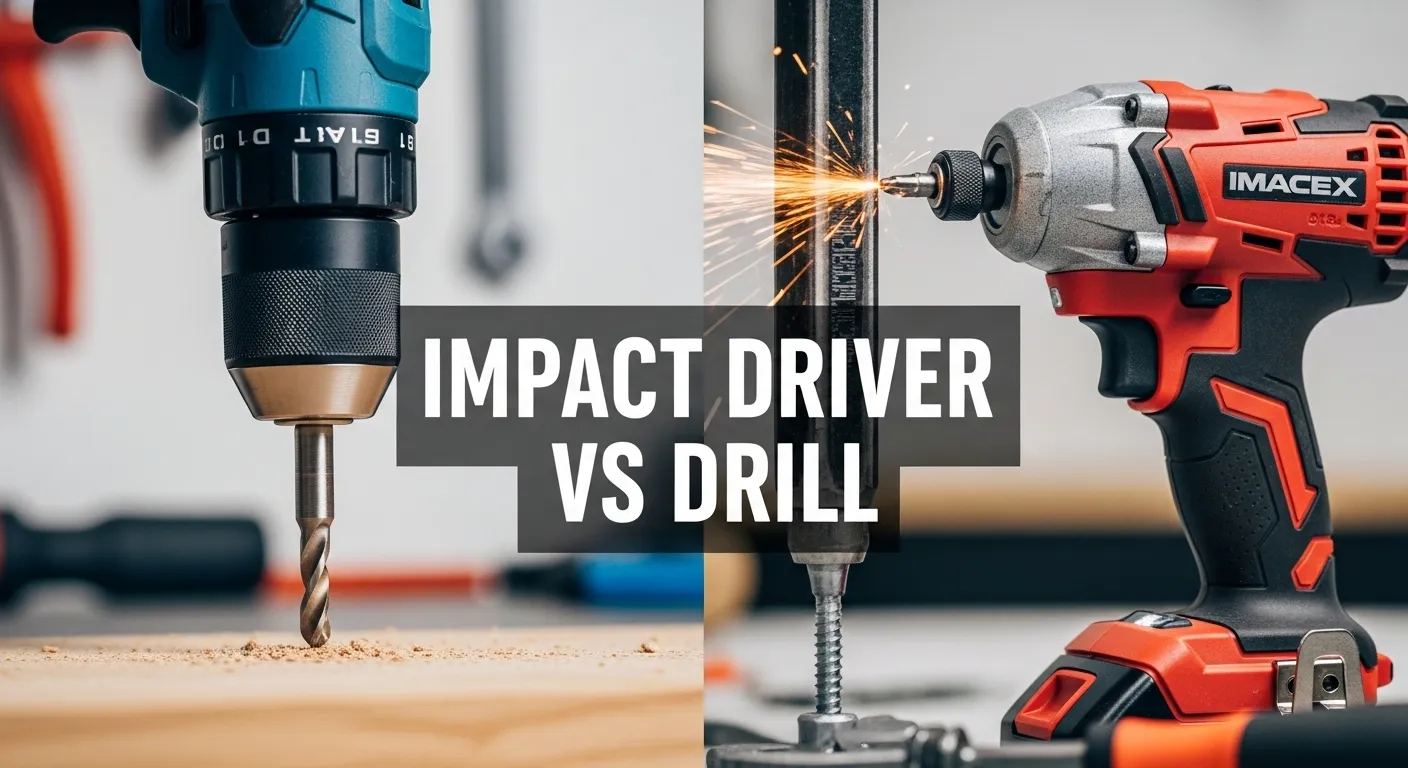Power tools help with many home tasks. Two common ones are drills and impact drivers. People often mix them up. This guide explains the differences. It shows when to use each. You will learn pros, cons, and tips to pick the right one. Read on to make smart choices for your DIY work.
What Is a Drill?
A drill makes holes in materials like wood or metal. It uses a motor to spin a bit. Most drills drive screws too. They have a chuck that holds different bits. Cordless models run on batteries. They suit home repairs and building.
Drills come in types like standard or hammer. Hammer drills add a pounding action for hard surfaces.
What Is an Impact Driver?
An impact driver drives screws and fasteners. It adds bursts of force when needed. This helps with tight or long screws. It uses a hex collet for quick bit changes. Most are cordless and compact. They fit in small spaces.
Impact drivers do not drill as well as regular drills. They focus on power for fastening.
Main Differences Between Impact Drivers and Drills
Drills and impact drivers look alike. But they work in different ways. Here is a table to show key differences:
| Feature | Drill | Impact Driver |
|---|---|---|
| Main Use | Drilling holes, light driving | Driving screws, heavy fastening |
| Torque | Lower, up to 500 in-lbs | Higher, up to 2,000 in-lbs |
| Speed | Higher RPM, variable control | Lower RPM, less control |
| Bit Holder | Keyless chuck for round bits | Hex collet for hex bits |
| Size | Larger, heavier | Smaller, lighter |
| Noise | Quieter | Louder due to impacts |
These traits affect what jobs each tool handles best.

Pros and Cons of Drills
Drills offer flexibility for many tasks.
Pros:
- Good for making clean holes.
- Works with many bit types.
- Has speed settings for control.
- Cheaper for basic models.
Cons:
- Less power for tough screws.
- Can slip and strip fasteners.
- Tires your hand with hard jobs.
Pros and Cons of Impact Drivers
Impact drivers shine in tough fastening.
Pros:
- Strong torque for long screws.
- Less strain on your wrist.
- Quick for repeated tasks.
- Small size for tight spots.
Cons:
- Not great for drilling holes.
- Needs special hex bits.
- Louder during use.
- Costs more than basic drills.
When to Use a Drill
Pick a drill for these jobs:
- Making holes in wood, metal, or plastic.
- Driving small screws into soft materials.
- Work that needs precise speed.
- Hanging shelves or assembling flat-pack furniture.
For home fixes, like repairing a door, a drill works well.
When to Use an Impact Driver
Choose an impact driver for:
- Driving large screws or bolts.
- Building decks or fences.
- Removing stuck fasteners.
- Tasks in hard wood or metal.
It helps with backyard projects, like setting up a pergola.
Link to related post: Check our pergola design ideas for more outdoor tips.
Can You Use an Impact Driver as a Drill?
Yes, but with limits. Use hex drill bits for small holes. It works in wood or drywall. Avoid it for precise or large holes. The impacts can make rough edges. For best results, use a real drill for drilling.
This answers a common question from users.
Do You Need Both Tools?
Many people buy both. A drill handles holes. An impact driver speeds up driving. Combo kits save money. If you do light work, one might suffice. For full home maintenance, both help.
See our must-have tools for new homeowners for more essentials.

Buying Tips for Drills and Impact Drivers
Look for these features:
- Brushless motors for longer life.
- Lithium-ion batteries for power.
- Variable speeds on drills.
- LED lights for dark areas.
Check voltage: 18V or 20V for home use. Read reviews on sites like Home Depot.
For cordless options, visit our cordless drill buying guide.
Common Questions About Impact Drivers and Drills
Here are answers to frequent searches:
- What is better for concrete? Use a hammer drill, not an impact driver.
- Impact driver vs hammer drill? Hammer drills pound forward for masonry. Impact drivers rotate with side hits.
- Do impact drivers strip screws? Less likely due to torque control.
These cover what people often ask.

Final Thoughts
Drills and impact drivers each have strengths. Pick based on your tasks. For holes, go with a drill. For power driving, choose an impact driver. Both make home projects easier. Start with what you need most. Build your kit over time.
Try our beginner woodworking projects to test your tools.
